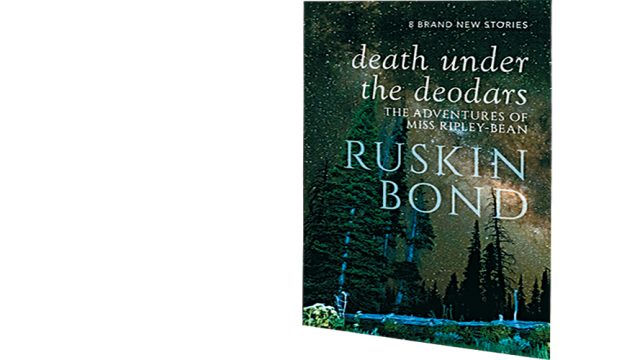This is a beautifully produced book, which is befitting, considering that its author is almost an Indian heirloom. And verily, Ruskin Bond’s Death Under the Deodars does amuse with its peculiar hill station nostalgia: old hotels, dead people, and bar pianists who strum on out-of-tune pianos.
About 30 pages in, I want to go to this quaint town in the Himalaya and walk along its Camel’s Back Road to the Lover’s Leap. After 60 pages, I search for flights on Ezeego1. After 90 pages, I end up on the Indian Railways website as I realise that Mussoorie has no airfield.
Of course, today’s Mussoorie may not be anything like the Mussoorie of yore, to where these stories take us back: a place of genteel, retired army officers and eccentric old Anglos; but also lunatic Nazi dentists who try to kill their patients; old Catholic fathers who take an unhealthy interest in healthy young boys, and other somewhat unsavoury characters. These snippets, from a time when people in hill stations strangled each other at flower shows, provide us with a fascinating portrait of such pockets of India where there was a pervading sense that Agatha Christie could have just walked right in and fed everybody poisoned chicken curry. And it would have been all right.
In fact, Dame Agatha’s first novel, The Mysterious Affair at Styles (1920), in which she introduced the iconic detective Hercule Poirot, is based on a murder that took place in Mussoorie (suggested to Christie as a plot by family friend Arthur Conan Doyle who had heard of it from India-born Rudyard Kipling). However, Christie changed the name of the hotel and shifted the location to England.
Bond’s chief protagonist is no Poirot, but a know-all, semi drunkard aunty who loves morbid gossip and hideous crème de menthe, Miss Ripley-Bean. She was a real-life Mussoorie resident and a friend of the author; Bond has even dedicated the book to her. She is about 70 years old in this book (set around 1970), in which she recalls scandals dating as far back as the 1920s, so she would have been in her teens when the crime that inspired The Mysterious Affair at Styles took place in 1911. Yet, for some reason, that case doesn’t feature among these short sketches.
She is not a detective, however, and though each story has criminal intent at the core, none really qualifies as detective fiction, because Miss Ripley-Bean isn’t a proactive mystery-solver. It is rather as if things just happen to
her. For example, she happens to meet an unhappy Bollywood couple who try to poison each other and instead of doing anything about it, she bizarrely enough enjoys a drink with one of them after the spouse has swallowed the fatal pill, and in another story a somewhat psychopathic novelist from Delhi moves into the haunted hotel room next to hers.
So, Death Under the Deodars isn’t about coming full circle in a literary sense—it does not give you suspense, no Poirot in Mussoorie, but it’s charming enough if you enjoy nostalgia. One wishes, though, that Penguin would employ editors to give better shape to slightly shapeless manuscripts, and not just focus on gorgeous design.




